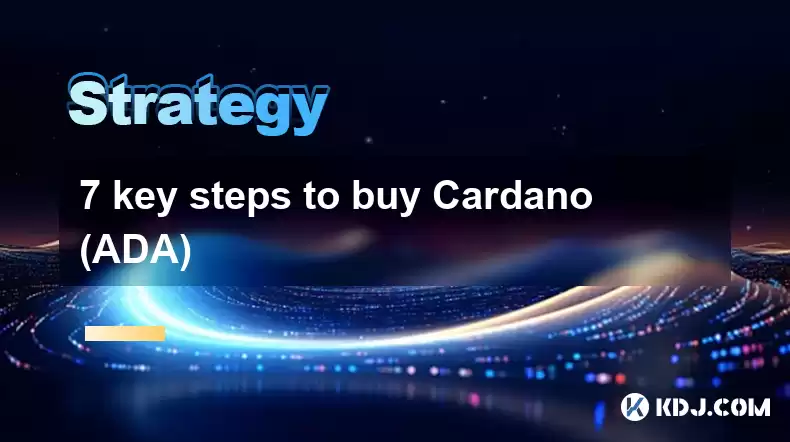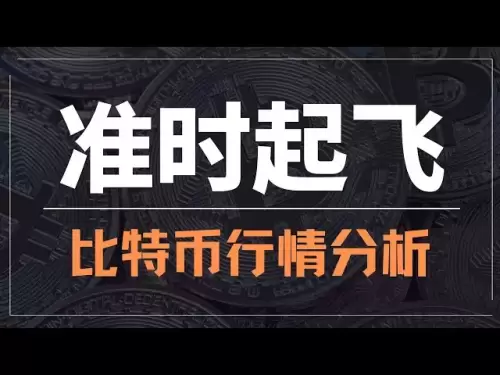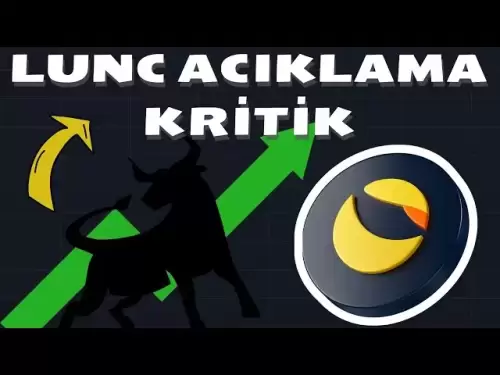-
 Bitcoin
Bitcoin $117300
1.93% -
 Ethereum
Ethereum $3866
5.21% -
 XRP
XRP $3.109
3.81% -
 Tether USDt
Tether USDt $1.000
0.01% -
 BNB
BNB $781.5
1.52% -
 Solana
Solana $173.0
2.95% -
 USDC
USDC $0.9998
0.00% -
 Dogecoin
Dogecoin $0.2181
6.31% -
 TRON
TRON $0.3403
0.93% -
 Cardano
Cardano $0.7683
3.91% -
 Hyperliquid
Hyperliquid $40.08
5.09% -
 Sui
Sui $3.742
7.38% -
 Stellar
Stellar $0.4152
4.69% -
 Chainlink
Chainlink $18.40
10.03% -
 Bitcoin Cash
Bitcoin Cash $580.6
2.21% -
 Hedera
Hedera $0.2543
4.25% -
 Ethena USDe
Ethena USDe $1.001
-0.01% -
 Avalanche
Avalanche $22.94
3.52% -
 Litecoin
Litecoin $121.8
2.24% -
 UNUS SED LEO
UNUS SED LEO $8.955
-0.41% -
 Toncoin
Toncoin $3.330
3.03% -
 Shiba Inu
Shiba Inu $0.00001270
2.97% -
 Uniswap
Uniswap $10.34
6.42% -
 Polkadot
Polkadot $3.805
3.86% -
 Dai
Dai $1.000
0.01% -
 Bitget Token
Bitget Token $4.429
1.80% -
 Cronos
Cronos $0.1495
4.65% -
 Monero
Monero $255.6
-9.08% -
 Pepe
Pepe $0.00001096
4.40% -
 Aave
Aave $282.9
7.85%
7 key steps to buy Cardano (ADA)
To buy Cardano (ADA), research the cryptocurrency, choose a reliable exchange, secure your account, deposit funds, place an order, transfer ADA to a wallet, and monitor your investment.
Apr 12, 2025 at 02:28 am

Buying Cardano (ADA), one of the leading cryptocurrencies, can be an exciting venture into the world of digital assets. Whether you're a seasoned investor or a newcomer, understanding the process is crucial. Here are the 7 key steps to buy Cardano (ADA) that will guide you through the journey of acquiring this promising cryptocurrency.
Step 1: Research and Understand Cardano (ADA)
Before diving into the purchase, it's essential to understand what Cardano (ADA) is and its potential. Cardano is a blockchain platform designed to enable the creation of smart contracts and decentralized applications. It aims to provide a more secure and scalable infrastructure compared to other blockchain networks. Researching Cardano's technology, its development team, and its roadmap will give you a solid foundation for your investment decision.
To get started, visit Cardano's official website and read through their documentation. Look into their whitepapers, blog posts, and community forums to gather as much information as possible. Understanding the project's goals and the problems it aims to solve will help you make an informed decision.
Step 2: Choose a Reliable Cryptocurrency Exchange
The next step is to select a reputable cryptocurrency exchange that supports Cardano (ADA). There are numerous exchanges available, each with its own set of features, fees, and security measures. Some popular exchanges that list ADA include Binance, Coinbase, Kraken, and Huobi.
When choosing an exchange, consider factors such as:
- Security: Look for exchanges with strong security protocols, including two-factor authentication (2FA) and cold storage for funds.
- Fees: Compare the trading fees and withdrawal fees of different exchanges to find the most cost-effective option.
- User Interface: A user-friendly interface can make your trading experience smoother, especially if you're new to cryptocurrency.
- Regulation: Ensure the exchange complies with relevant regulations in your jurisdiction.
Once you've selected an exchange, sign up for an account by providing the necessary personal information and completing the verification process.
Step 3: Secure Your Account
Security is paramount when dealing with cryptocurrencies. Securing your exchange account is a critical step to protect your investment. Here are some steps to enhance your account's security:
- Enable Two-Factor Authentication (2FA): This adds an extra layer of security by requiring a secondary verification method, such as a code sent to your mobile device.
- Use Strong Passwords: Create a unique and complex password for your exchange account, and avoid using the same password across multiple platforms.
- Be Wary of Phishing: Always double-check the URL of the exchange website and be cautious of emails or messages asking for your login credentials.
By taking these precautions, you can significantly reduce the risk of unauthorized access to your account.
Step 4: Deposit Funds into Your Exchange Account
To buy Cardano (ADA), you'll need to deposit funds into your exchange account. Most exchanges support deposits via bank transfer, credit/debit card, or other cryptocurrencies. Here's how to deposit funds:
- Log into your exchange account and navigate to the deposit section.
- Choose your preferred deposit method. If you're using a bank transfer, you'll need to provide your bank details and the amount you wish to deposit.
- Follow the on-screen instructions to complete the deposit. This may involve confirming the transaction through your bank or payment provider.
Once the funds are credited to your exchange account, you're ready to proceed with purchasing Cardano (ADA).
Step 5: Place an Order to Buy Cardano (ADA)
With funds in your exchange account, you can now place an order to buy Cardano (ADA). Exchanges typically offer two types of orders: market orders and limit orders.
- Market Order: This type of order executes immediately at the current market price. It's suitable if you want to buy ADA quickly.
- Limit Order: This allows you to set a specific price at which you want to buy ADA. The order will only execute if the market reaches your specified price.
To place an order:
- Navigate to the trading section of the exchange and select the ADA trading pair (e.g., ADA/USDT or ADA/BTC).
- Choose the type of order you want to place (market or limit).
- Enter the amount of ADA you wish to buy and review the order details.
- Confirm the order to execute the purchase.
Once your order is filled, the ADA will be credited to your exchange wallet.
Step 6: Transfer Cardano (ADA) to a Secure Wallet
For long-term storage, it's advisable to transfer your Cardano (ADA) to a secure wallet. Holding your ADA on an exchange can be risky due to potential security breaches. There are several types of wallets available, including hardware wallets, software wallets, and paper wallets.
- Hardware Wallets: These are physical devices that store your private keys offline, offering the highest level of security. Popular options include Ledger and Trezor.
- Software Wallets: These are applications that run on your computer or mobile device. Examples include Daedalus (Cardano's official wallet) and Yoroi.
- Paper Wallets: These involve printing your private keys on a piece of paper, which can be stored in a safe place.
To transfer your ADA to a wallet:
- Set up your chosen wallet according to the manufacturer's instructions.
- Generate a receiving address in your wallet.
- Return to your exchange account and navigate to the withdrawal section.
- Enter the receiving address and the amount of ADA you want to transfer.
- Confirm the withdrawal and wait for the transaction to be processed on the blockchain.
By moving your ADA to a secure wallet, you take control of your private keys and enhance the safety of your investment.
Step 7: Monitor and Manage Your Cardano (ADA) Investment
After purchasing and securing your Cardano (ADA), it's important to monitor and manage your investment. Keeping an eye on market trends, Cardano's development progress, and broader cryptocurrency news can help you make informed decisions about your holdings.
- Stay Informed: Follow Cardano's official channels, such as their blog and social media accounts, to stay updated on project developments.
- Use Trading Tools: Utilize trading platforms and tools to track ADA's price movements and set alerts for significant changes.
- Diversify: Consider diversifying your cryptocurrency portfolio to spread risk across different assets.
By actively managing your investment, you can better navigate the volatile cryptocurrency market and potentially maximize your returns.
Frequently Asked Questions
Q1: Can I buy Cardano (ADA) directly with fiat currency?
A1: Yes, some exchanges allow you to buy Cardano (ADA) directly with fiat currency, such as USD or EUR. However, availability may vary depending on your location and the exchange's offerings. Always check the exchange's supported payment methods before proceeding.
Q2: What is the minimum amount of Cardano (ADA) I can buy?
A2: The minimum amount of Cardano (ADA) you can buy depends on the exchange and the trading pair you use. Some exchanges may have a minimum order size, while others may allow you to buy fractional amounts of ADA. Check the specific requirements of your chosen exchange before placing an order.
Q3: How long does it take to buy Cardano (ADA)?
A3: The time it takes to buy Cardano (ADA) can vary based on several factors, including the deposit method, the exchange's processing times, and the type of order you place. Bank transfers may take several days to process, while credit/debit card deposits are typically faster. Market orders execute immediately, while limit orders may take longer to fill if the market doesn't reach your specified price.
Q4: Is it safe to store Cardano (ADA) on an exchange?
A4: While exchanges have security measures in place, storing large amounts of Cardano (ADA) on an exchange is generally not recommended due to the risk of hacks and security breaches. For long-term storage, it's safer to transfer your ADA to a secure wallet where you control the private keys.
Disclaimer:info@kdj.com
The information provided is not trading advice. kdj.com does not assume any responsibility for any investments made based on the information provided in this article. Cryptocurrencies are highly volatile and it is highly recommended that you invest with caution after thorough research!
If you believe that the content used on this website infringes your copyright, please contact us immediately (info@kdj.com) and we will delete it promptly.
- Bitcoin Reserve, Gold Revaluation, Congress Considers: A New Era for US Financial Strategy?
- 2025-08-08 04:30:12
- KAITO's Momentum: Can It Reclaim Support Amidst Social Media Scrutiny?
- 2025-08-08 04:30:12
- Pi Coin's dApp and AI Potential: Building a Decentralized Future
- 2025-08-08 02:30:12
- Ruvi AI Takes the Lead: Outshining Dogecoin on CoinMarketCap
- 2025-08-08 02:50:12
- Cryptos Under $1: Is Ripple Still the King?
- 2025-08-08 03:50:12
- Cold Wallet, Bonk Price, ICP Price: Navigating the Crypto Landscape in 2025
- 2025-08-08 03:56:12
Related knowledge

How to avoid common crypto investment mistakes?
Jul 13,2025 at 01:35am
Understanding the Risks of Crypto InvestmentInvesting in cryptocurrency can be highly rewarding, but it also comes with significant risks. One of the ...

What is a long-short crypto strategy?
Jul 15,2025 at 10:56am
Understanding the Basics of a Long-Short Crypto StrategyA long-short crypto strategy is an investment approach where traders simultaneously take long ...

What is a long-short crypto strategy?
Jul 11,2025 at 01:28pm
Understanding the Basics of Long-Short Crypto StrategyA long-short crypto strategy is an investment approach where traders take both long and short po...

How to use the RSI indicator for crypto?
Jul 12,2025 at 03:56pm
Understanding the RSI Indicator in Cryptocurrency TradingThe Relative Strength Index (RSI) is a momentum oscillator used to measure the speed and chan...

Is copy trading a good strategy for crypto beginners?
Jul 12,2025 at 08:28am
Understanding Copy Trading in the Cryptocurrency MarketCopy trading is a strategy where novice traders replicate the trades of experienced investors a...

How to build a crypto portfolio with $1000?
Jul 13,2025 at 08:14pm
Understanding the Basics of Cryptocurrency InvestmentBuilding a crypto portfolio with $1000 starts with understanding the fundamentals of cryptocurren...

How to avoid common crypto investment mistakes?
Jul 13,2025 at 01:35am
Understanding the Risks of Crypto InvestmentInvesting in cryptocurrency can be highly rewarding, but it also comes with significant risks. One of the ...

What is a long-short crypto strategy?
Jul 15,2025 at 10:56am
Understanding the Basics of a Long-Short Crypto StrategyA long-short crypto strategy is an investment approach where traders simultaneously take long ...

What is a long-short crypto strategy?
Jul 11,2025 at 01:28pm
Understanding the Basics of Long-Short Crypto StrategyA long-short crypto strategy is an investment approach where traders take both long and short po...

How to use the RSI indicator for crypto?
Jul 12,2025 at 03:56pm
Understanding the RSI Indicator in Cryptocurrency TradingThe Relative Strength Index (RSI) is a momentum oscillator used to measure the speed and chan...

Is copy trading a good strategy for crypto beginners?
Jul 12,2025 at 08:28am
Understanding Copy Trading in the Cryptocurrency MarketCopy trading is a strategy where novice traders replicate the trades of experienced investors a...

How to build a crypto portfolio with $1000?
Jul 13,2025 at 08:14pm
Understanding the Basics of Cryptocurrency InvestmentBuilding a crypto portfolio with $1000 starts with understanding the fundamentals of cryptocurren...
See all articles

























































































